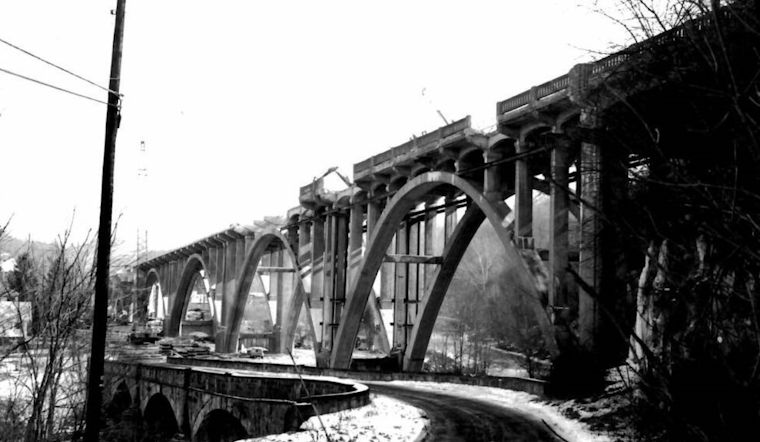Plans to restore the historic U.S. Route 40 bridge in Belmont County, Ohio, have been announced by the Ohio Department of Transportation (ODOT). The bridge’s historic heritage will be preserved as its deteriorating structure is strengthened by the Blaine Hill Arches of Memory Rehabilitation Project. To ensure safety and preserve the traditional appearance, the project involves reconstructing the superstructure.
The important initiative already has funding. However, ODOT is looking for further funding through the Bridge Investment Program, which is a grant under the Bipartisan Infrastructure Law of the US Department of Transportation. “ODOT prioritizes safety above all else,” said Deputy Director Tom Corey in a recent statement from the Ohio Department of Transportation (ODOT). We are attempting to move the project along as quickly as possible because we understand how inconvenient the closure is for local residents and workers. We want to make sure that this important bridge continues to serve our community for many years to come.
Although it hopes to begin earlier, ODOT plans to begin construction by 2027. The design is presently being laid out by Michael Baker International. The bridge, which has four famous arch spans, has a noteworthy history that began in 1932. Its closure in 2024 was caused by serious degradation, including leaks and cracks in the deck, as well as damage to the columns and concrete framework, which raised concerns and made the rehabilitation necessary.
Blaine, Boydsville, Lansing, and Brookside are among the local communities connected by the Blaine Hill Viaduct. Restoring local traffic and facilitating the region’s freight transportation are the goals of its reconstruction. With a few minor adjustments to the pedestrian amenities, the ODOT said the update will maintain the bridge’s current design. A primary concern is making sure that this lifeline’s modernization is matched with its historical significance.
The necessity for durable infrastructure and appropriate consideration for the bridge’s architectural value are both met by rehabilitation efforts. The project supports larger initiatives for infrastructure maintenance with a nod to history preservation by utilizing contemporary materials, such as sophisticated concrete sealants, and design techniques to prolong the bridge’s life and maintain its historic character.
Note: Thank you for visiting our website! We strive to keep you informed with the latest updates based on expected timelines, although please note that we are not affiliated with any official bodies. Our team is committed to ensuring accuracy and transparency in our reporting, verifying all information before publication. We aim to bring you reliable news, and if you have any questions or concerns about our content, feel free to reach out to us via email. We appreciate your trust and support!



Leave a Reply